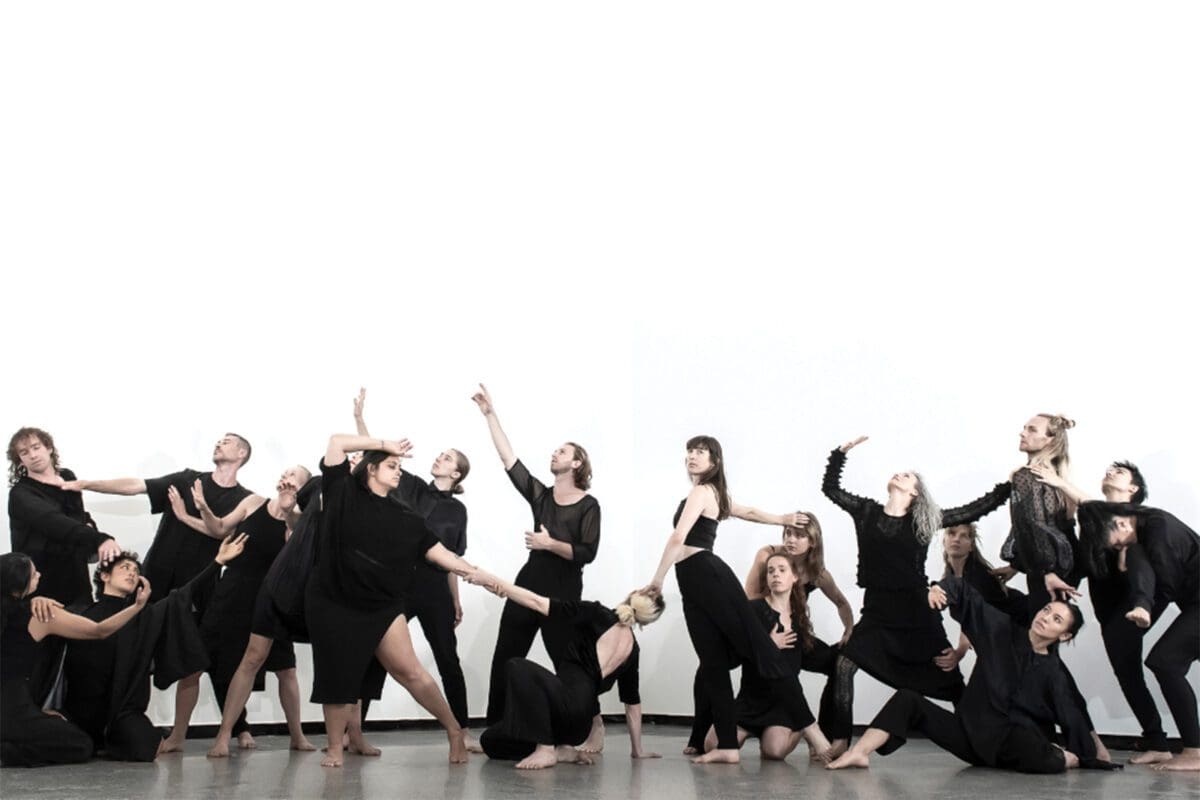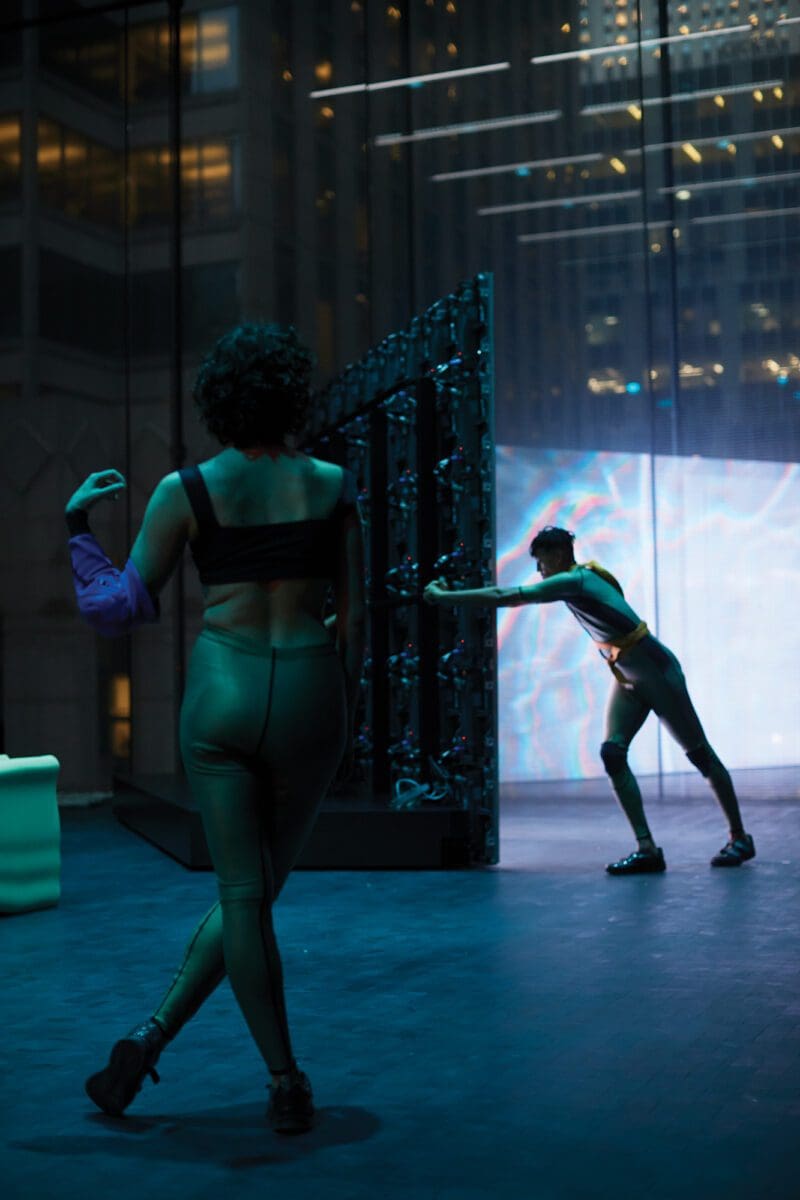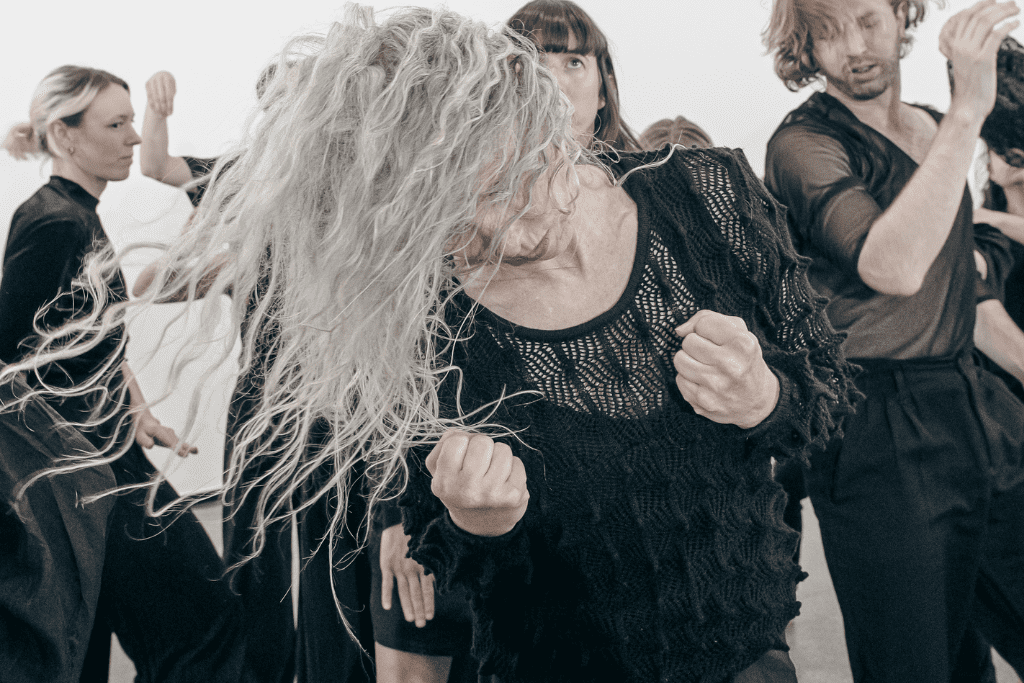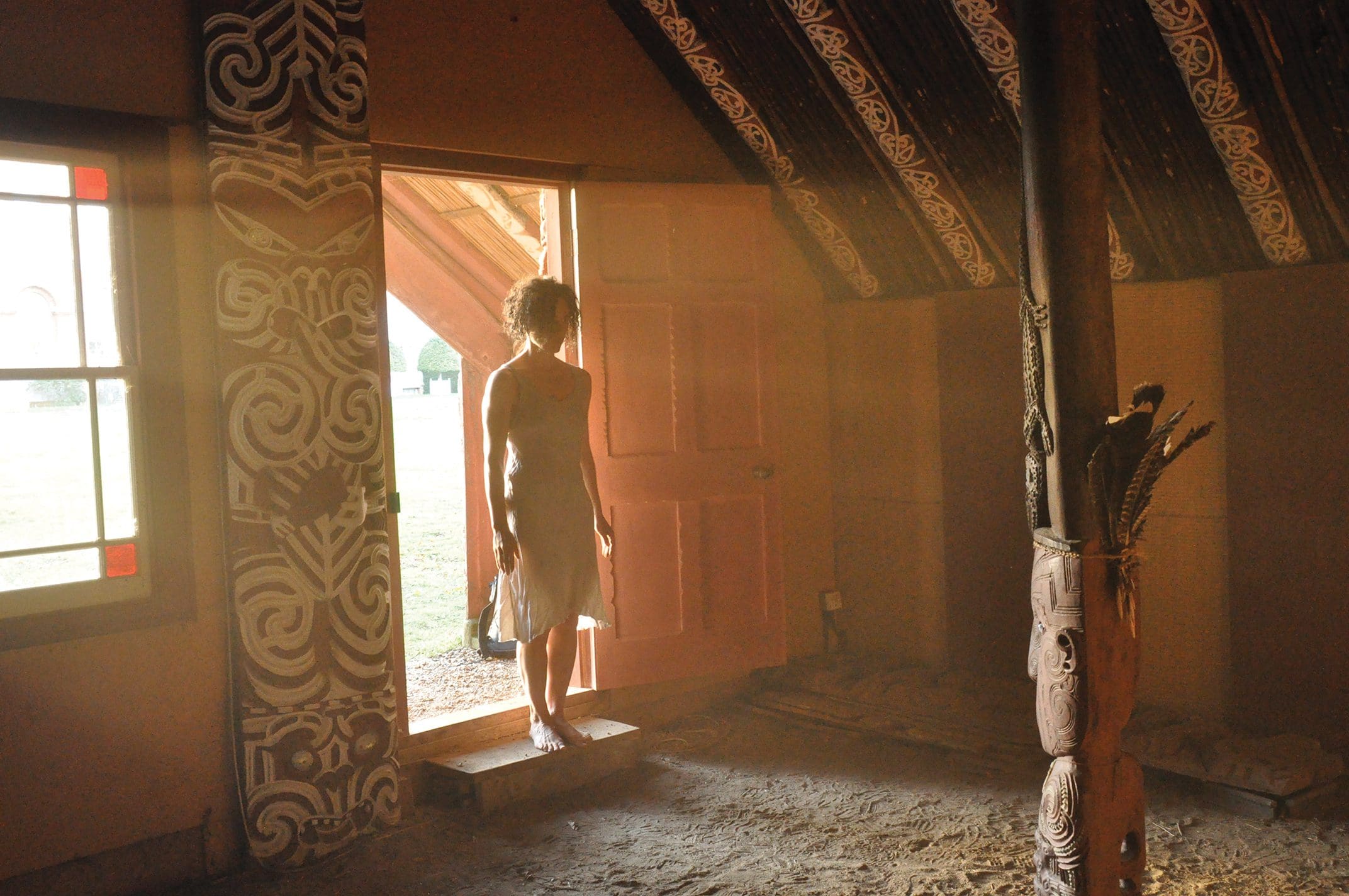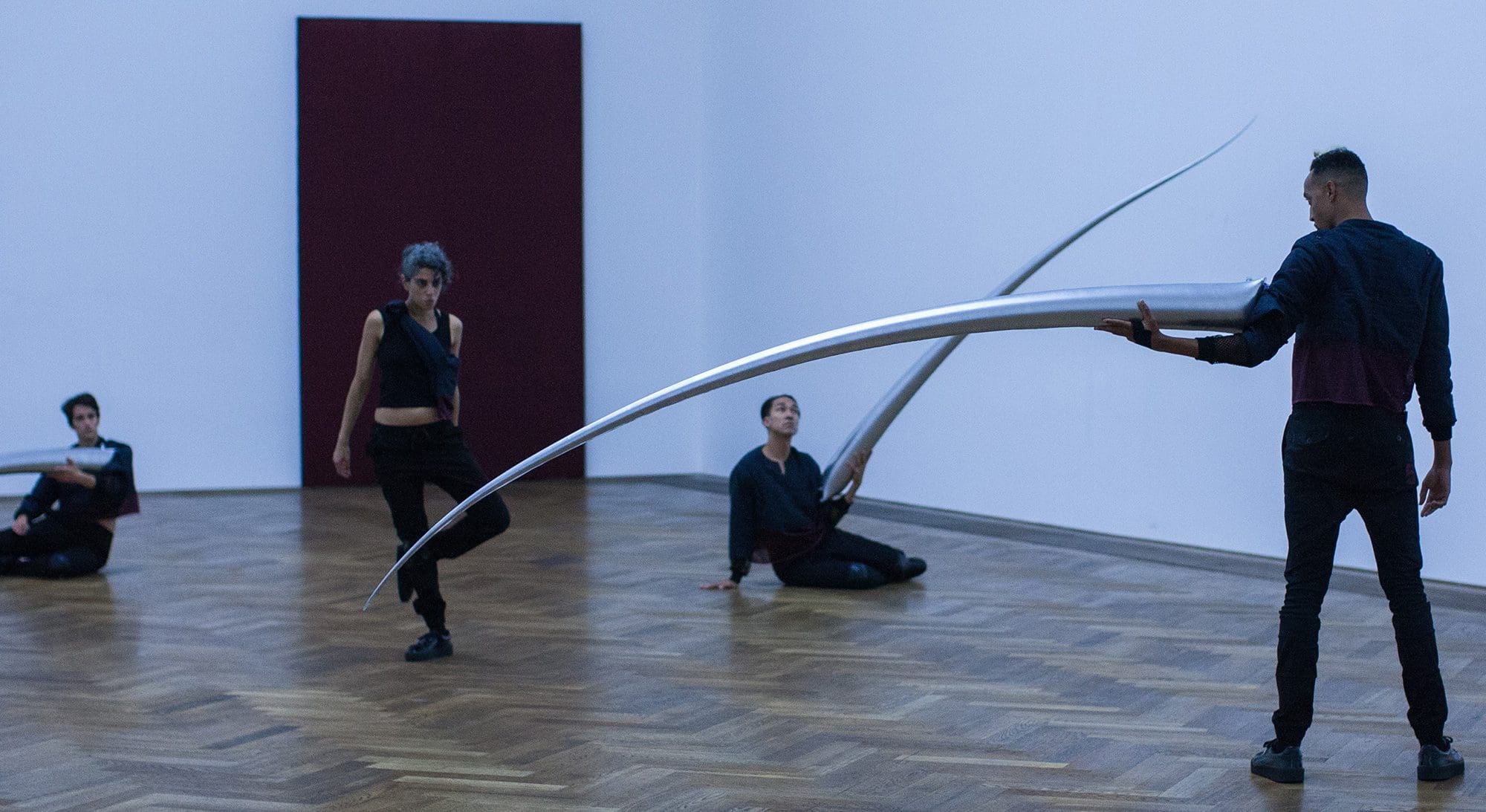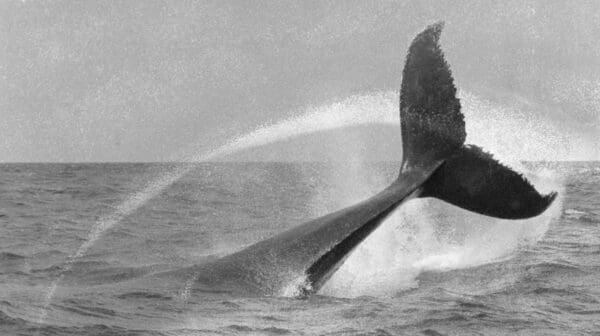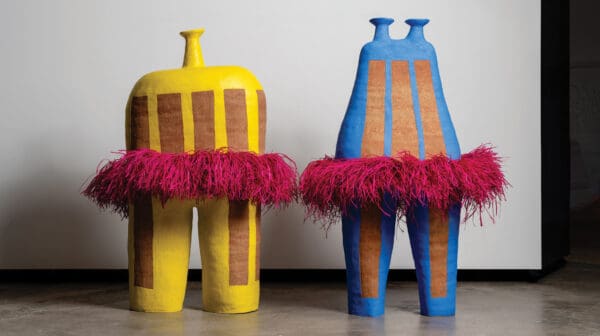Dance is moving into the gallery. In the last six months across Sydney and Melbourne, we have seen choreographic works by Shelley Lasica at Monash University Museum of Art, Riana Head-Toussaint in the opening program of Sydney Modern, Lucy Guerin at the Australian Centre for Contemporary Art, Alicia Frankovich at the Ian Potter Museum: NGV Australia, for Melbourne Now, Jo Lloyd at Carriageworks, and can currently see Victoria Hunt as part of Dreamhome: Stories of Art and Shelter at the Art Gallery of New South Wales. While these are just a few examples of dance in gallery or museum spaces, they speak to hugely diverse moments where choreography and dance are foundational to an artist’s vision.
“Each of these venues have their own communities of artists and creative contexts that inform how artists approach the dance-visual arts interface.”
Yet over time, dance at major institutions has been cultivated by smaller galleries and organisations such as West Space, Gertrude Contemporary and Neon Parc in Melbourne, and Artspace, Firstdraft and ALASKA Projects in Sydney, as well as multi-arts venues such as Phoenix Central Park, Performance Space/Carriageworks and Campbelltown Arts Centre. The 2009-2010 exhibition What I Think When I Think About Dancing at Campbelltown, curated by Emma Saunders and Lisa Havilah, was in step with international curatorial pre-occupations with dance in the early 2000s.
Each of these venues have their own communities of artists and creative contexts that inform how artists approach the dance-visual arts interface. As artists Shelley Lasica and Zoe Theodore explain of their curation of To Do/To Make at Neon Parc, which centred dance and choreography, the opportunity allowed for curatorial experimentation; the artists “were encouraged to do what they want, present the work for as long as they want, engage as many performers as they want, and address the audience as they want”.
But to understand why dance has moved into the gallery is to understand the international history of dance and contemporary art. This backstory fleshes out local and current Australian practices, tracing migrations of aesthetic traditions that reveal dance as implicated in major artistic progressions.
HISTORY HERE AND ELSEWHERE
Western contemporary dance emerged at the turn of the 20th century and flew into the arms of the avant-garde from its earliest years in Europe. The American dancer, Loie Fuller, moved to Paris and became the darling of Art Nouveau, attaining artist friends like Auguste Rodin. Dancers such as Isadora Duncan were associated with the Symbolist movement, and the Futurists included dancers such as Giannina Censi. Mary Wigman’s German Expressionist dance, and Bauhaus choreographies such as Oskar Schlemmer’s Triadic Ballet, 1922, sit alongside progressive forms of ballet from the Ballets Russes (who collaborated with artists such as Wassily Kandinsky and Pablo Picasso) and Ballets Suédois (who worked with Fernand Léger and Giorgio de Chirico). Artistic communities and networks were built around shared compositional pre-occupations that were transferred between dance, choreography, visual art, set design and music, and presented as total works of art for the stage. Such productions also toured in Australia in the first half of the 20th century.
The mid-century avant-garde saw a period of artists ‘trying on’ other art forms. American choreographers Simone Forti and Trisha Brown’s Dance Constructions, 1960-61, and Equipment Pieces, 1968-1971, were performed in visual art spaces in New York such as Yoko Ono’s loft at 112 Chambers St and the Whitney Museum of American Art. These performances troubled divisions between bodies and objects, props and action, sculpture and choreography. Robert Rauschenberg’s choreographies such as Pelican, 1963, and Map Room II, 1965, were informed by his close association with American dancer Merce Cunningham—and the younger generation of artists such as Forti and Brown took Cunningham’s cross-disciplinary experiments to a new level.
“In Australia, classical choreographers such as Robert Helpmann collaborated with Arthur Boyd in the 1940s creating set and costume designs recently showcased at Bundanon gallery.”
Yet there was a gendered profile within avantgarde dance (as there is today). Notwithstanding the recurrent mind/body and male/female binaries, many artists working across dance and the visual arts remain female identifying, and dance has been a pathway through which female artists have moved into the broader arts landscape. The influence of women dancers and choreographers on their contemporary male artists has not been adequately acknowledged until recently—which speaks to the many challenges this feminised, transient art form faces.
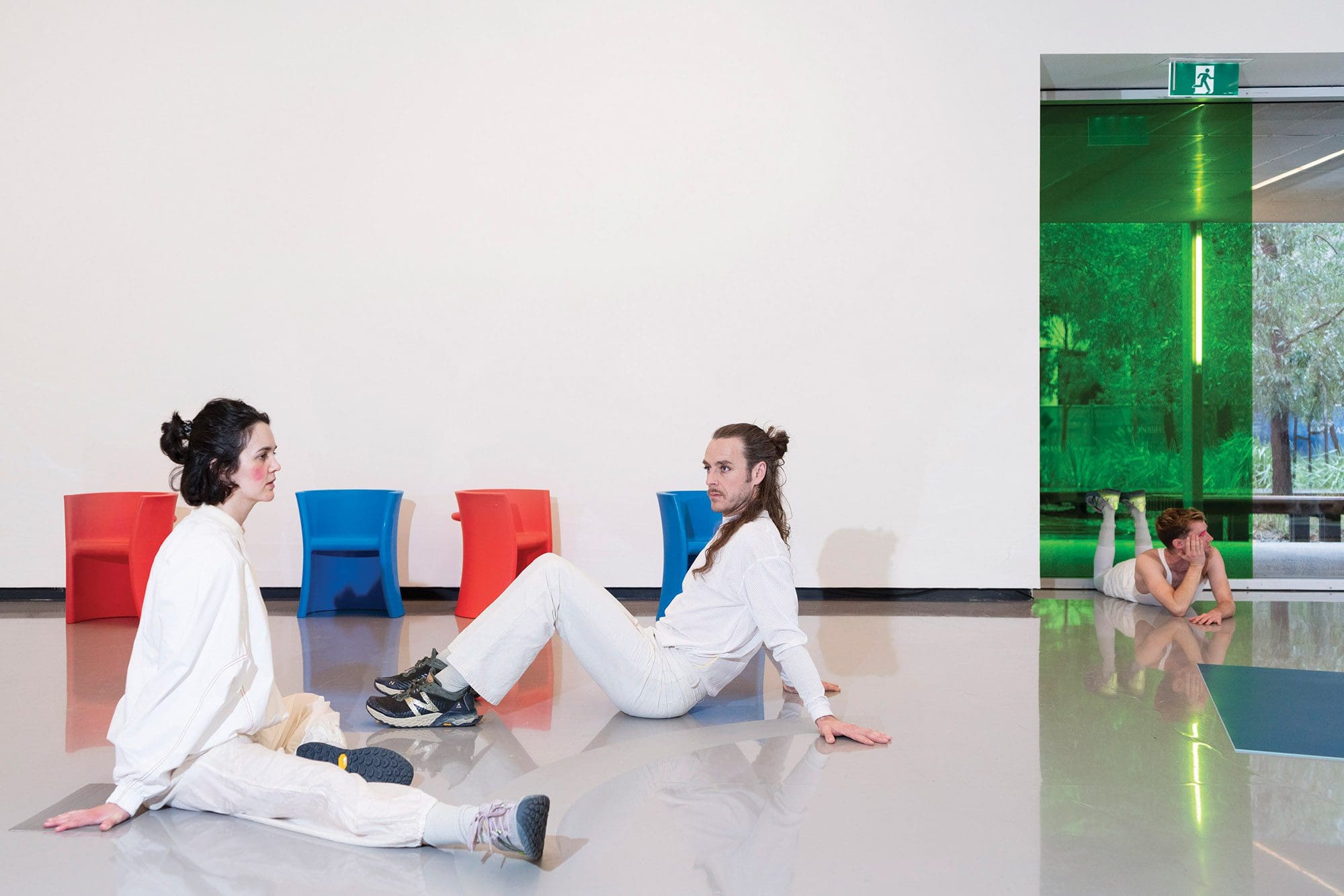
In Australia, classical choreographers such as Robert Helpmann collaborated with Arthur Boyd in the 1940s creating set and costume designs recently showcased at Bundanon gallery. Modernists such as Gertrud Bodenwieser brought European Expressionism to Sydney, seen in works such as The Demon Machine, 1923, that turned dancers into the pistons and wheels of a choreographed, human mechanism. Beyond artistic collaborations, the relationship between contemporary dance and trends in the visual arts is written through the bodies of our historic dancers; a certain formalism in the shapes and lines of the body, staccato or percussive rhythms reflecting pattern and repetition in the visual arts, and an absence of narrative and character that suppressed the subjective and reached toward the mythic.
But it was in the 1970s that truly intermedial practices developed locally, such as the work of Sydney-based Philippa Cullen whose tragically brief career has come to light in the exhibition Dancing the Music: Philippa Cullen 1950-1975 (recently shown at McClelland Gallery) and in the work of artist Diana Smith whose 2021 Artspace exhibition, Tasks yet to be composed for the occasion, was part of her series working with Cullen’s archive. Choreographer Helen Herbertson recalls a rich scene in Sydney during this time when herself, Cullen and Jacqui Carroll were involved in cross-disciplinary events with musicians and artists: “Much work across genres and artists seemed to flow in and out of galleries and others spaces—Central St Gallery, Sculpture Centre, Institute of Contemporary Art, Cell Block, Seymour Centre.”
Margaret Lasica, who has influenced many, brought a more expansive approach to dance in Melbourne that sat outside the mainstream, engaging choreography in various contexts and facilitating cross-artform programming with experimental artists such as Stelarc. And it’s from this 20th-century history that dance and visual arts entwine today.
“Dance is attractive for museums because of the new perspectives it offers on issues such as labour, presence, an emphasis on process over product, and a critique of visuality.”
DANCE TODAY
The current story of dance in Australian contemporary art spaces really begins with Margaret Lasica’s daughter, Shelley Lasica, who has been making choreographic works for gallery spaces since the mid-1980s and is the first Australian dance artist to be represented by a major gallery (she was represented by Anna Schwartz from 1992 to 2012).
Across the 80s and 90s, Lasica had no real contemporaries working in gallery contexts, and while dance artists may have collaborated with visual artists on occasion, there was no explicit framing of their choreographic work within contemporary art concerns. Lasica says that during this period, “All sorts of people were doing performances in galleries, a lot of visual artists such as Lyndal Jones, but not choreographers.” For Lasica, “The American scene was the point of reference” as well as the “Euro-performance scene” connected to experimental music.
As theorist André Lepecki observed in 2017, “It is… important to note that what makes the current new/not-new performative turn in the arts quite an interesting event is the fact that it is essentially a choreographic (or dance) turn… the current turn is deeply informed by dance and choreography.” Internationally there have been major, recent retrospectives at institutions like MoMA and Museum der Moderne, Salzburg, tracing dance back to the mid-century New York avant-garde.
Dance is attractive for museums because of the new perspectives it offers on issues such as labour, presence, an emphasis on process over product, and a critique of visuality. Dance also allows for critiques of the wrestling between concept and material, as well as authorship and subjectivity.
While one oft-cited critique is that this is a superficial extension of the museum preoccupation with the ‘experience economy’, the reply is that museums and galleries not only offer dancers increased visibility, but the possibility of creating works with audience involvement, as well as durational pieces beyond a traditional showtime, and the juxtaposition of movement with static visual artworks.
These opportunities have propelled dance appearing in Australian arts institutions. Australian choreographer and artist Adam Linder, for example, is part of an international situation where dance is dominating the recent performance turn in galleries and museums. Linder has presented his work in major institutions such as MoMA, and has a monthlong durational performance at the Museum of Contemporary Art in Sydney, starting this mid-July. He is candid about the lure of the gallery, saying, “To be identified as a visual artist is to hold the place at the top of the pyramid within how we’ve understood art in the West.” However, he describes what dance, as a “community practice”, can enable in the gallery; how the dancer’s body can shape “an experiential affect for the context, for the work, for the viewer”.
“Collaboration is often central to many dance practices, and artists who engage with dance and dancers from other areas of specialisation include Agatha Gothe-Snape, Sally Smart, Alicia Frankovich, David Rosetzky and Rochelle Haley.”
In Australia today, there are many dance artists equally comfortable working in a gallery as anywhere else: Lizzie Thomson, Matthew Day, Angela Goh, Lee Serle, Amrita Hepi, Jo Lloyd, Deanne Butterworth, Rhiannon Newton, Ivey Wawn, Rebecca Jensen, Lilian Steiner, Julie-Anne Long, Victoria Hunt, Latai Taumoepeau, and Brian Fuata.
Collaboration is often central to many dance practices, and artists who engage with dance and dancers from other areas of specialisation include Agatha Gothe-Snape, Sally Smart, Alicia Frankovich, David Rosetzky and Rochelle Haley. Haley, who works with dance artists such as Goh and Wawn, says that she has “a deep interest in the moving body, and feels a similarity between painting and choreography at the level of composition”.
WHERE TO NOW?
A first challenge is definitions. When dance enters contemporary art spaces it’s breaking with various historical traditions of dance, whereby dance doesn’t simply become subsumed into the logic of visual arts, but becomes a contemporary art medium in itself.
Today, dance appears in galleries and museums as adaptations of stage-based works, performances responding to existing exhibitions and permanent collections, and public programs engaging visitors through observation or participation. But how does the self-determined artist assert their choreographic work within a post-disciplinary situation? Such works require the understanding of curators and relevant staff from the very first point of contact. What is the work? Who is involved? What does it require in terms of space and time? How will its development and performance be supported?
There are also pragmatic aspects that dancers and choreographers consistently navigate, such as poor remuneration, inappropriate and unsafe flooring, lack of green rooms or rest areas, prohibition of drinking water in gallery spaces, inadequate security services to care for dancers, temperature-controlled discomfort, and a general lack of understanding of the support required for rigorous physical practice. One recent, infamous case is the mistreatment of performers (mostly dancers) who were asked to perform nude as centrepieces on tables in Marina Abramović’s piece for a 2011 fundraising gala at Los Angeles’s Museum of Contemporary Art—a highly visible example of what can go wrong.
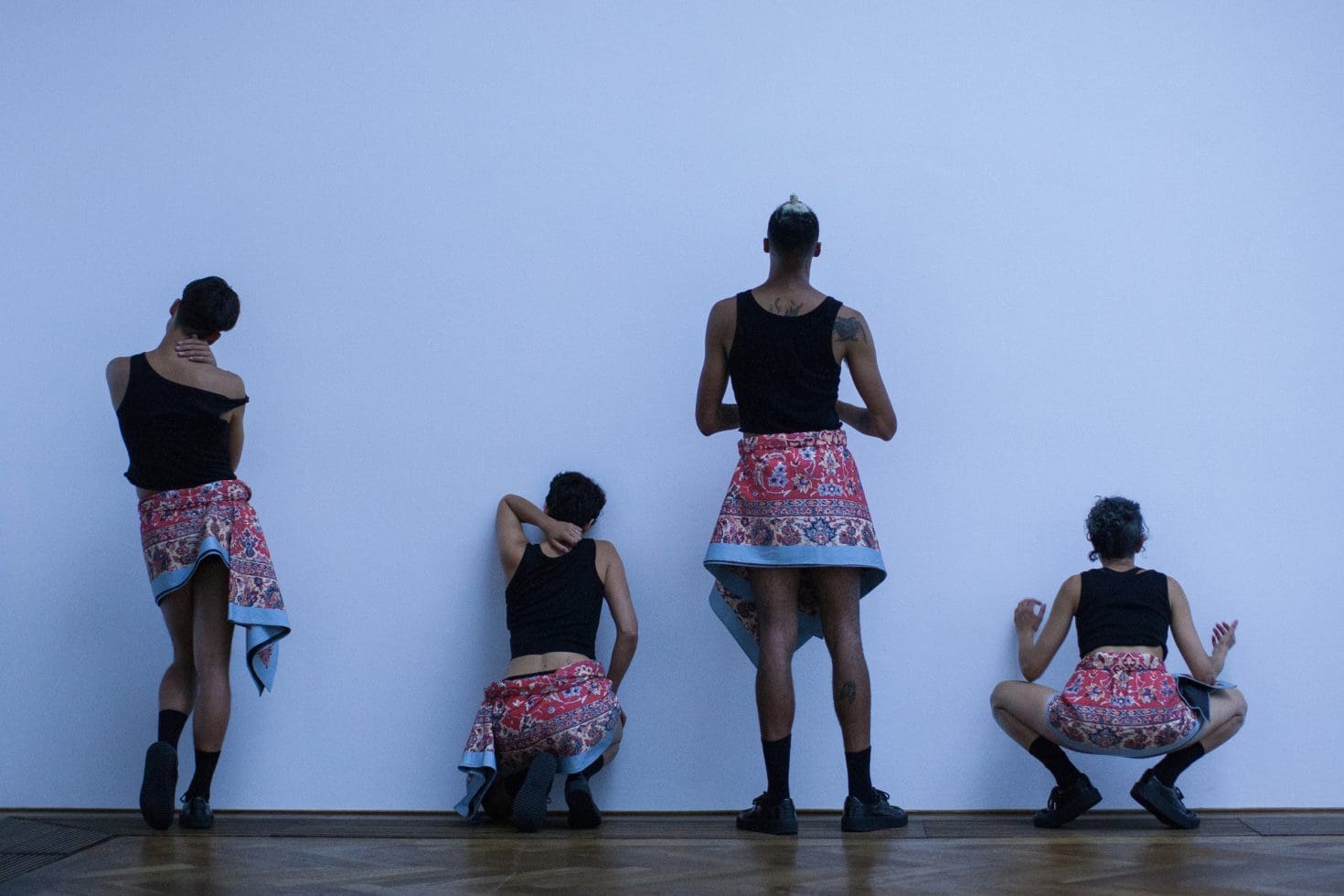
Yet artists find proactive ways to mitigate against such issues. Linder, for instance, imbeds working conditions within the materiality of his art, including contracts pasted to the wall in his performance Services, 2013-2019. Many other artists have made security and invigilation staff a part of their work.
Finally, as a transient art form, dance and choreography are particularly susceptible to practical issues of collecting, archiving and conserving works. While no state institutions currently hold Australian choreographic works in their collections, this is set to change in the next few years. If dance is to be considered among venues, cultures, platforms and economies that have traditionally been reserved for the visual arts, its particular conditions, practices and knowledges need to be truly understood.
Such work is central to a research project I’m currently working on, Precarious Movements: Choreography and the Museum. Alongside a team of Australian arts academics, curators and artists, we’ve interviewed more than 50 arts professionals, bringing artists, researchers and institutions into dialogue about how to best support both the choreographer and the museum—the results will be published in 2024. But for the moment, it’s about sustaining momentum in both theory and practice around dance and the visual arts.
Precarious Movements: Choreography and the Museum is an Australian research project with partners University of New South Wales (UNSW), National Gallery of Victoria (NGV), Tate, Art Gallery of New South Wales (AGNSW) and Monash University Museum of Art (MUMA), Perth Institute of Contemporary Arts (PICA) and independent artist Shelley Lasica. Through this case study the National Gallery of Australia has commissioned A Sun Dance by Rochelle Haley for presentation at the National Gallery in February 2024.
Dreamhome: Stories of Art and Shelter
Featuring Victoria Hunt
Art Gallery of New South Wales (Sydney NSW)
On now—until late 2023
Hustle Harder
Adam Linder
Museum of Contemporary Art Australia (Sydney NSW)
22 July—20 August
Melbourne Now
Featuring Alicia Frankovich
The Ian Potter Centre: NGV Australia (Melbourne VIC)
On now—20 August
This article was originally published in the July/August 2023 print edition of Art Guide Australia.





